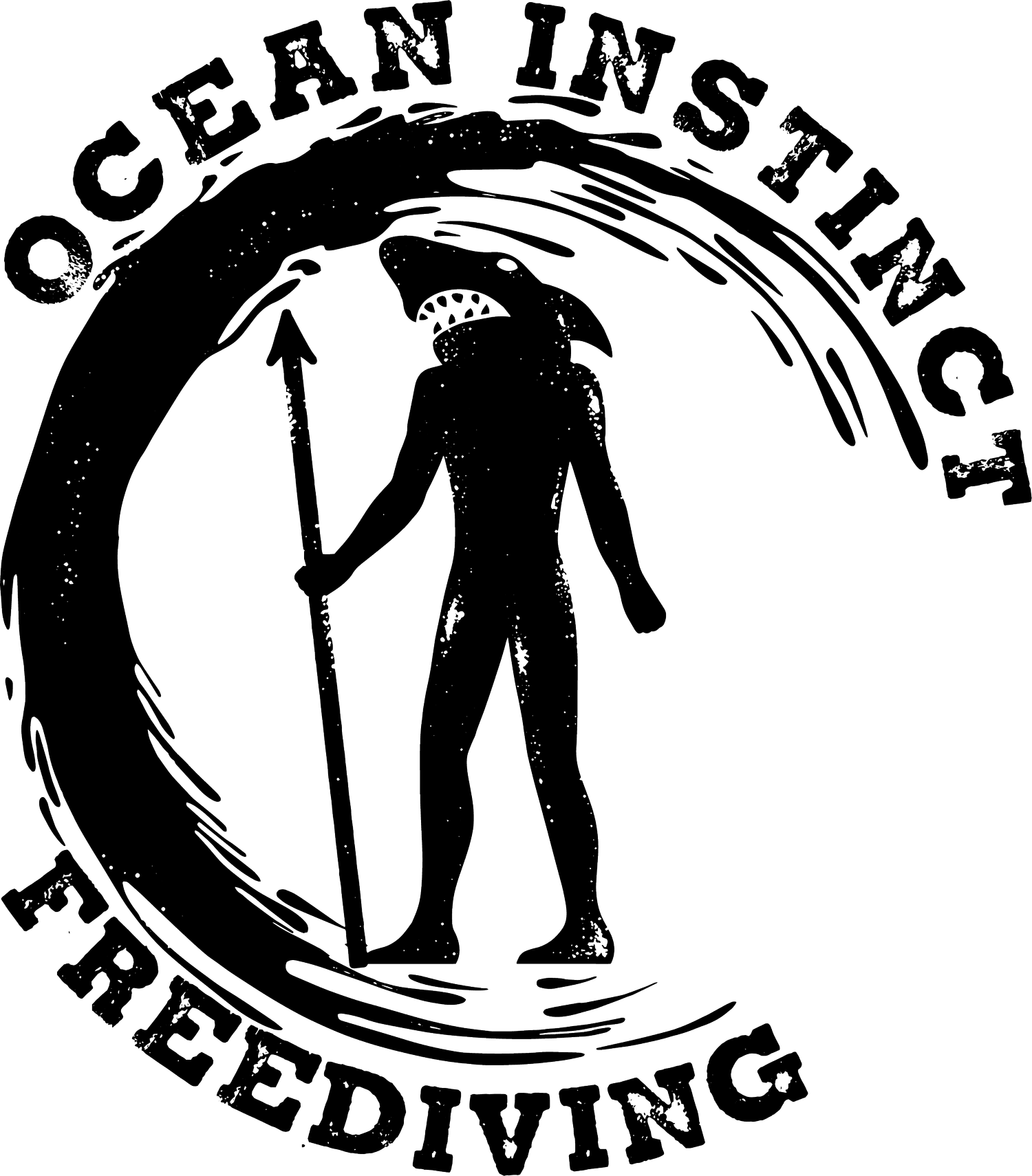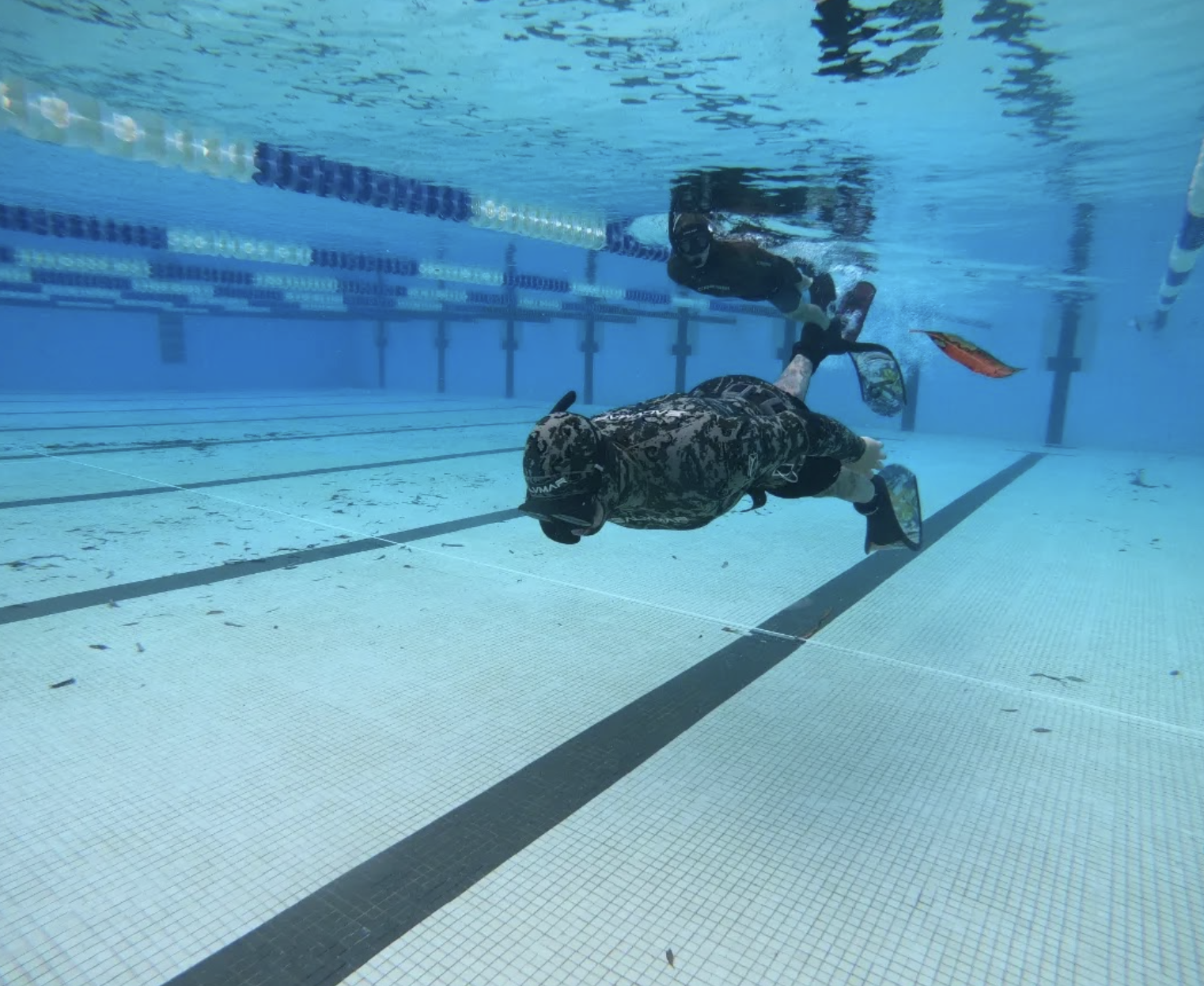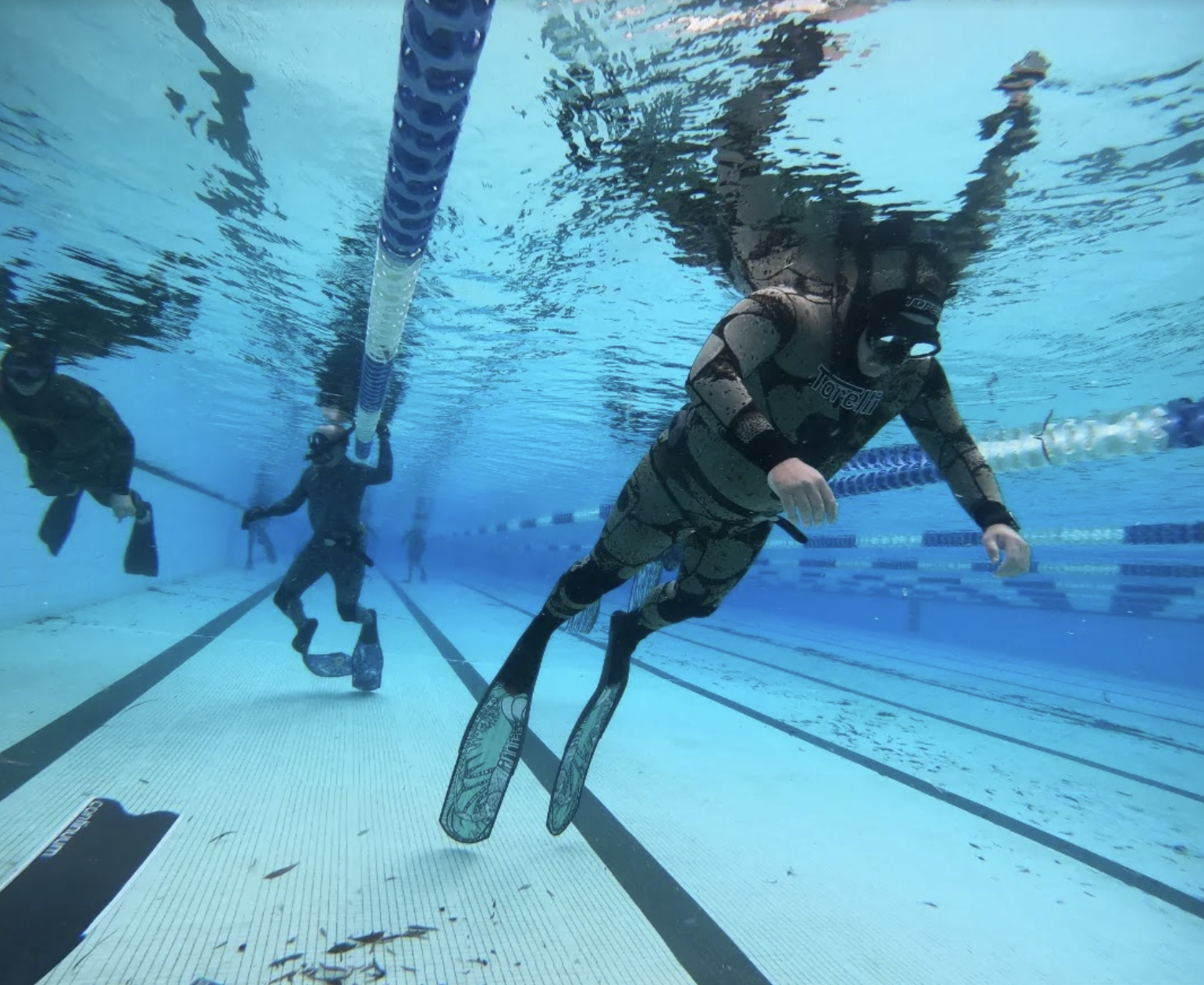Pool training for spearfishing
Always train with a buddy
Spearfishing training can take many forms. Some full-time spearos may prefer to avoid pool training, believing that more ocean time is the best training. However, regular, structured training can provide numerous benefits that can be transferred to the sea for those that might not have regular ocean access. It can also help identify any flaws in technique that may be hindering your success, a safety issue or making your dives more uncomfortable. Additionally, structured training can help you improve your skills when ocean conditions are not favourable as well.
It's important to note that freediving training and spearfishing training are very similar, but focusing your drills on the specific demands of spearfishing can lead to faster development. Always train under the direct supervision of a buddy and inform them of your dive plan before starting your swim for safety.
HOW CAN I TRAIN SPEARFISHING SPECIFIC?
delay training in progress
There are various ways to focus your training for spearfishing, depending on your skill level. For those new to spearfishing, it may be beneficial to take a regular freediving approach to pool training, with an emphasis on interval training to build up CO2 tolerance, working on extending distance with sub max and maximum swims or using the pool to fine-tune your kicking, streamlining and breathe up techniques.
For more experienced spearfishers, the most beneficial way to train is placing focus on drills that mimic the conditions and scenarios you are likely to face while hunting in the ocean. This approach not only physically conditions you for spearfishing dives but also helps you develop a strong mental familiarity with the structure of a dive, resulting in more controlled and easier dives. This is where delay training comes in handy.
DELAY YOUR BREATH
Delay training is a specific type of training that focuses on simulating the hunting scenario of spearfishing, where the diver must hold their breath for longer periods of time before making a dive. This type of training can be done in the pool or in the open water, and it involves performing a series of dives with increasing delays between the surface interval and the descent.
Some of the benefits of delay training for spearfishing include:
Building up lung capacity and endurance: By holding your breath for longer periods of time, you are training your body to adapt to the demands of spearfishing dives, which typically require longer breath-holds than recreational diving.
Improving mental preparation: By simulating the hunting scenario, delay training can help you develop a strong mental familiarity with the structure of a dive, which can result in more controlled and easier dives.
Enhancing hunting skills: Delay training can help you improve your hunting skills by simulating the conditions and scenarios you are likely to encounter while hunting in the ocean. this will help keep the body calm and relaxed, a key skill for blending into the reef that to allow for that stealthy approach or ambush.
Identifying and correcting any flaws in technique: By performing a series of dives with increasing delays, you can identify and correct any flaws in your diving technique that may be holding you back from successful stalking opportunities or making your dives more uncomfortable. It will also train the body not to panic or rush at the ascending/ descending phase of a dive.
Overall, delay training is a valuable tool for spearfishers of all skill levels, as it can help improve physical endurance, mental preparation, hunting skills, and overall diving technique.
examples of delay training:
Setting up drills similar to dive plans not only prepares your body, but your mind as well for the real deal
30 second static, 50m Dynamic - The static at the start will give your body time to relax as your dive response kicks in, this will result in more underwater time and generally a more comfortable dynamic. (be warned that a longer static can bring you closer to hypoxia, always increase your delay times with caution in small increments)
25m dynamic, 30second static ,25m dynamic - The static halfway through a swim will feel less relaxed than static at the beginning as the body has already accumulated Co2 from the swim. this style of drill will place focus on being able to relax your body after physical activity.
50m dynamic 30 second static - The delay at the end will force you to deal with your full accumulation of Co2 as well as a common mental conditioning of “wall = end of dive”
Notice that all 3 drills the distance and time doesn’t change, just the structure of the dive plan. experiment with these drills and it will be a very different experience for each of them with most divers experiencing the most discomfort on drill #3 . For training for spearfishing the most ideal drill to place your focus on is #2 as it is the most beneficial for mimicking the feelings and time you will encounter on a dive. Think of the swim at the start as your descent down to depth, the delay is you waiting on the bottom relaxing your body and scouting for targets and the return is your ascent. Its always important to start of low and build up if you are new to delays and always remember to have a buddy acting as safety in the pool, for safety reasons don’t forget to inform your buddy of you delay times and swim distances and make sure your buddy follows close by on the surface during these drills.
WHAT IS NEXT?
Once you are comfortable with a basic halfway delay drill you can begin to incorporate different scenarios into your delay training, think of how you structure your dives. how deep do you usually swim to? , Do you freefall?, do you wait then move along the bottom looking for prey? and how long will your ascent be? all the questions should be taken into consideration when making more complex delay drills, here are a few extended delay examples to help train many common scenarios.
descent - 15m dynamic / freefall and waiting -1:00 static/ ascent - 15m dynamic
descent - 15m dynamic / freefall -15 second static / scouting - 10m dynamic / ascent - 25m dynamic
descent - 15m dynamic / freefall -15 second static / scouting - 10m dynamic / ambush - 20 second static / ascent - 25m dynamic
Scale these drills to your needs as every diver is different there can be alterations to depth and total bottom time. the advantage of the pool is being able to push yourself much closer to your limit than you ever will be able to safely in the sea. always remember to have an attentive and competent safety diver while pool training.
HOW ABOUT DEAD WEIGHT?
regularly practice your rescues in training
efficiency is key to a good rescue. keep your fins clear and your profile narrow to maximise your speed
lets break this into 2 scenarios:
If you are lucky and follow your pursuits correctly one day you will be able to land a large pelagic species. one moment you are negative in buoyancy and lining up a shot. The shot lands and is successful and you opt to carry your catch to the surface.
You are diving deep with a friend. they dive down to line up a shot, they fail at making a kill and overstay their time at depth, on return they blackout 8-10m from the surface. Your natural responses kick in and you race down to retrieve your friend, When was the last time you practised a rescue at depth?
These two scenarios can be trained the exact same way, what we are focusing on is how to position and control a dead weight while swimming, something that with a bit of practice and learning to pace yourself you can handle any mass of person through the water. this drill will require a buddy in water to participate.
start with each diver at an end of a 25m pool.
at the start of the swimmers dive the ‘victim’ up the far end will sink onto the bottom and play dead.
the goal of the swimmer is to retrieve the victim from 25m and return them to the opposite end without surfacing.
For extra scenario training you can add a surface rescue procedure to the end of the dive
removal of mask > blow > tap > talk
race against another pair of divers to add a challenge to the drill
Some key points in this drill is to push the dead weight instead of pulling, focusing on keeping you and the dead weight as streamlined as possibly to make the swim easier. play around with different grabs and techniques to find the best position for you that will also protect your divers airways.
TRAINING UPKEEP
work as a group to hit your training goals
To improve your performance, regular exposure is crucial. If you're in the water frequently, aim to have at least one pool session per week. If you primarily spearfish on weekends, use weeknights to train with like-minded divers in a pool. Keep in mind that training once a week will result in a gradual steady improvement, so try to train twice a week or more for more improved results. Don't forget to take rest days occasionally. Always dive with a partner for safety and consider taking a spearfishing or freediving course and joining your local club to learn safe diving practices. Have fun training and remember to always dive safely, never alone.
Interested in learning to freedive? FIND OUT MORE




